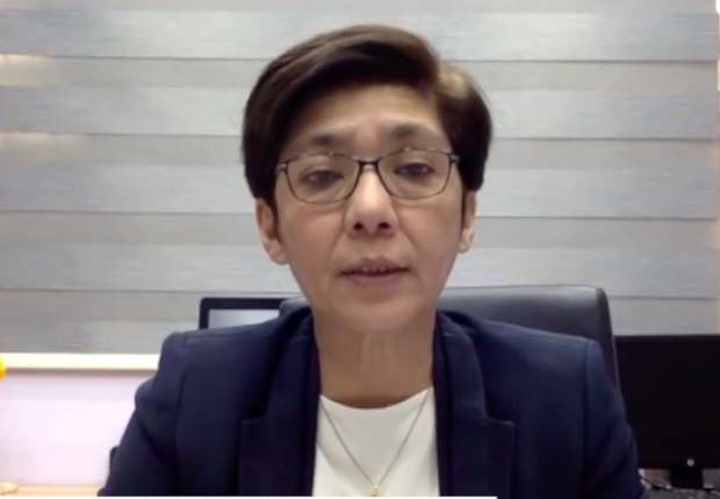
Health Undersecretary Maria Rosario Vergeire said the simulation exercise for vaccine deployment held on Tuesday generally “went well” and the government was able to achieve its goal for said exercise.
“Just what Secretary [Francisco] Duque said, ‘so far, so good’,” Vergeire said in a media forum on Wednesday.
“We have the targeted time and we were able to surpass the given time,” she added stressing the simulation will help them identify the different processes that they can improve on.
“This [Covid-19 vaccine rollout] is the first and very big to be undertaken by the Philippine government,” Vergeire said disclosing that although the objective of the simulation was “achieved”, there are still challenges that they will have to face during the vaccine rollout.
These are: to ensure that there would be no wastage; confidence of the people in the vaccine; behavior of the people; the available vaccine might not be the preference of the people; cold chain facility; and monitoring of the adverse effects.
On Wednesday the government, through a coordinated network of stakeholders composed of national government agencies and private sector partners, conducted a full-scale simulation exercise of vaccine deployment to showcase the country’s readiness for Covid-19 vaccine deployment.
The simulation exercise demonstrated the general function and responsibilities of the national and regional vaccine operations centers and stakeholders, and aimed to identify potential challenges in the vaccine delivery, handling, transport, and cold chain management, in anticipation of the expected arrival of Pfizer/BioNTech vaccines from Covax Facility by mid of February.
The simulation exercise displayed how vaccines will be received upon arrival at the Ninoy Aquino International Airport Terminal 2, transported to its temporary holding at the Research Institute for Tropical Medicine (RITM) to its deployment to designated hospitals—the Philippine General Hospital, Lung Center of the Philippines, Dr. Jose N. Rodriguez Hospital (TALA Hospital), Vicente Sotto Memorial Medical Center and the Southern Philippines Medical Center.
Upon deplaning, the vaccines, as pre-cleared by Customs, will be loaded to a reefer van. The van will transport the vaccines to the RITM Storage and Distribution Department where it will be inspected and stored. Once the vaccines have been properly allocated, a reefer van will once again pick up the vaccine trays and ship the vaccines to the designated hospitals. If the said designated hospital is off the island of Luzon, the vaccines will be transported to NAIA and flown to the receiving airport.
“The full-scale simulation puts to initial test our National Deployment and Vaccination Plan. It provides the implementers a clear view on what is expected to happen once these vaccines arrive in the country. It also explores possible loopholes that we may have missed and helps us better improve our plan,” Duque said.
The simulation exercise, Duque said, demonstrated the step-by-step process that the government and private sector partners will take once the first batch of Covid-19 vaccines from the Covax Facility arrive in the country.
“Nakita po natin na maganda ang naging execution [We saw that the execution was good] as it only took 18 minutes from what we anticipated that will take 30 minutes na pag-transfer ng vaccines [ if the vaccines would be transferred] from the aircraft to the refrigerated van. Everyone involved did their part and what was expected of them but we still want to perfect our time and motion. We will still rehearse 2-3 days bago dumating ang [before the arrival of the ] vaccines,” vaccine czar and National Task Force Against (NTF) Covid-19 chief implementer Sec. Carlito Galvez, Jr. said.
The simulation exercise was spearheaded by the Inter-Agency Task Force for the Management of Emerging Infectious Diseases and the NTF, Department of Health (DOH), Department of National Defense, Department of Interior and Local Government, Department of Transportation, Office of the Presidential Adviser on the Peace Process, Bases Conversion and Development Authority, Bureau of Customs, Metro Manila Development Authority, and the Philippine National Police.
“The DOH, with the vaccine cluster, would like to thank our implementing partners and everyone who participated in this simulation exercise. Though we witnessed a successful holding of this exercise, this is just a simulation,” Duque said.
The real litmus test to the government’s plan, he stressed, will begin once the vaccines arrive.
“It is very crucial that we execute our vaccination program with no error as we are working with very limited global supply of vaccines, which is why we are making sure that we can readily address all other possible scenarios,” Duque concluded.
